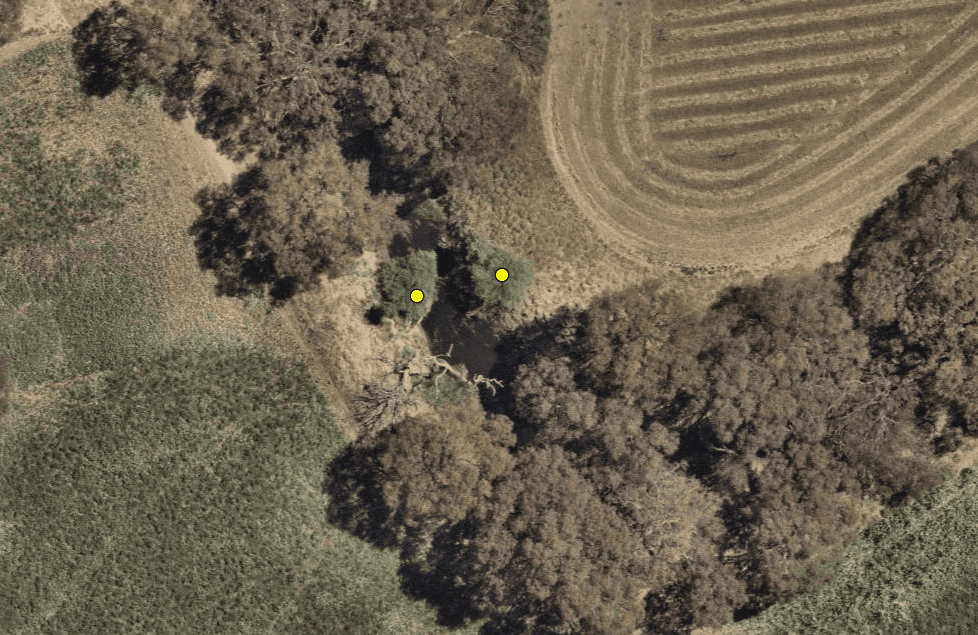Corangamite CMA has been using the latest aerial imagery and field data to map all the willow infestations in the Living Moorabool area in order to prioritise works for future projects.
Beginning in the 19th century the common Crack Willow (Salix fragilis) was planted along waterways to stabilise stream banks following land clearing.
While they do a very good job at holding stream banks together, there are several side effects from having these introduced trees in our waterways, such as their high-water intake and seasonal dump of leaves into the water which consume dissolved oxygen and release nutrients as they decompose.
Native freshwater ecosystems have adapted to the relatively consistent input of slowly decomposing leaves from native vegetation and don’t tolerate the sudden influx of nutrients and decrease in oxygen from the willow leaves in Autumn.
Crack willows also spread aggressively from broken twigs and can grow across waterways and trap sediments which can alter the flow of water, smother stream bed habitat for fish and change the shape of the river channel. This is why Corangamite CMA focuses a lot of time and money on removing willows and replacing them with native vegetation.

This activity is working towards a vision of 'Healthy People, Healthy Environment and Healthy Culture' in the Living Moorabool flagship. Visit here to find out more about the flagship project.
64 Dennis Street, Colac VIC 3250
PO Box 159, Colac, VIC 3250
Hours: 8:30am – 5pm, Monday to Friday
T: 1800 002 262
E: info@ccma.vic.gov.au
BARWON WATER OFFICES
Hours: 8:30am – 5pm, Monday to Friday
All mail must be sent via our Colac office
PO Box 159, Colac, VIC 3250
T: 1800 002 262
E: info@ccma.vic.gov.au
 Close
Close